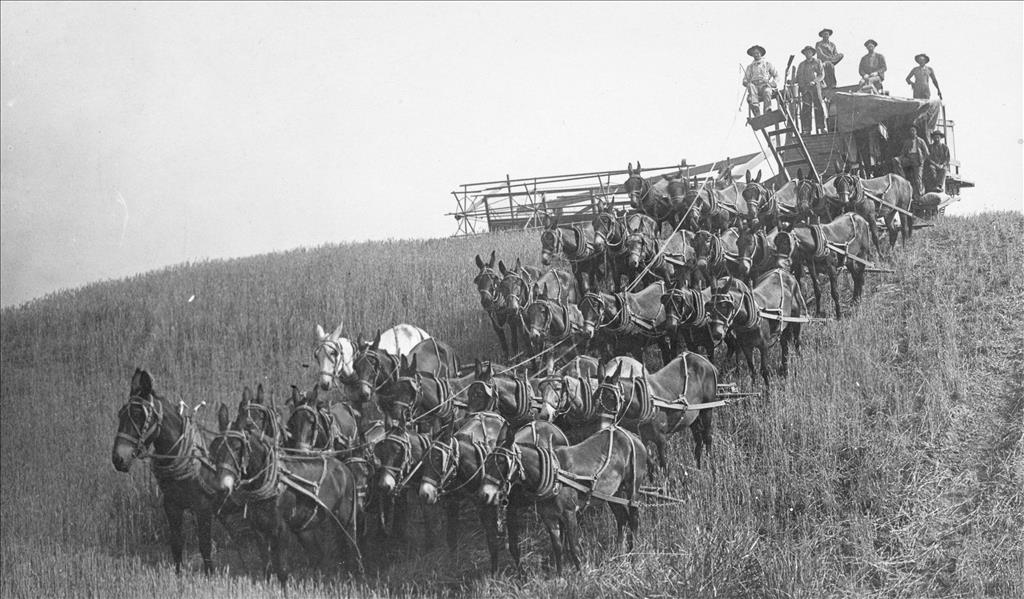Combine harvesters, often referred to simply as "combines," have dramatically transformed the agricultural landscape, revolutionizing the way crops are harvested.
These versatile machines combine three critical harvesting operations—reaping, threshing, and winnowing—into a single process, significantly enhancing efficiency and productivity. This article explores the evolution of combine harvesters, their role in modern farming, and the benefits they bring to the agricultural sector.
1. The Evolution of Combine Harvesters
Combine harvesters have undergone significant advancements since their invention in the early 19th century. Initially powered by horses, the first combines were bulky and inefficient.
The introduction of steam engines and later internal combustion engines marked the beginning of mechanized harvesting. Over the years, continuous innovations have led to the development of modern combines equipped with sophisticated technology, including GPS, automated steering, and advanced threshing mechanisms.
2. Enhanced Efficiency and Productivity
One of the most significant advantages of combine harvesters is their ability to perform multiple harvesting functions simultaneously.
This integration of reaping, threshing, and winnowing into a single process dramatically reduces the time and labor required for harvesting crops. Modern combines can harvest vast fields in a fraction of the time it would take using traditional methods, allowing farmers to maximize their productivity and minimize labor costs.
3. Precision Agriculture and Combine Harvesters
Combine harvesters play a crucial role in precision agriculture, a farming management concept that uses technology to optimize crop production.
Equipped with GPS and yield mapping systems, combines can collect and analyze data on crop yields and field conditions in real time. This information helps farmers make informed decisions about planting, fertilizing, and irrigation, leading to more efficient and sustainable farming practices.
4. Versatility in Crop Harvesting
Modern combine harvesters are designed to handle a wide range of crops, including wheat, corn, soybeans, and rice.
With interchangeable headers and adjustable settings, combines can be quickly adapted to harvest different crops, making them incredibly versatile. This adaptability is particularly beneficial for farmers who grow multiple crops, as it allows them to use a single machine for various harvesting needs.
5. Technological Advancements in Combine Harvesters
Technological advancements have significantly enhanced the capabilities of combine harvesters. Some of the key innovations include:
- Automated Steering and Navigation: GPS-guided systems enable combines to navigate fields with high precision, reducing overlaps and missed areas.
- Yield Monitoring Systems: These systems provide real-time data on crop yields, moisture levels, and other critical parameters, helping farmers optimize their harvesting strategies.
- Telematics and Remote Monitoring: Farmers can monitor and control combines remotely, allowing for better management and maintenance of the machines.
- Advanced Threshing and Cleaning Mechanisms: Modern combines are equipped with efficient threshing and cleaning systems that minimize grain loss and ensure high-quality harvests.
The economic benefits of using combine harvesters are substantial. By increasing harvesting speed and efficiency, combines help farmers reduce labor costs and increase their overall profitability.
The ability to harvest crops quickly also reduces the risk of weather-related crop damage, ensuring that farmers can maximize their yields and revenue.
Combine harvesters contribute to sustainable farming practices by reducing the need for manual labor and minimizing soil compaction.
The precision technology used in modern combines ensures that crops are harvested efficiently, reducing waste and optimizing resource use. Additionally, the ability to quickly and efficiently harvest crops allows farmers to implement cover cropping and other soil conservation practices more effectively.
8. Case Studies and Success Stories
Numerous case studies highlight the transformative impact of combine harvesters on crop harvesting. For example, a study conducted in the Midwest United States found that the adoption of advanced combine harvesters led to a 25% increase in harvesting efficiency and a 20% reduction in grain loss. In developing countries, the introduction of affordable combines has empowered smallholder farmers to increase their productivity and improve their livelihoods.
Combine harvesters have revolutionized crop harvesting, driving significant improvements in efficiency, productivity, and sustainability. As technology continues to evolve, the role of combine harvesters in modern agriculture is set to become even more critical. By embracing these advancements, farmers worldwide can enhance their operations, meet the growing demand for food, and contribute to a more sustainable agricultural future.








Comments
Post a Comment